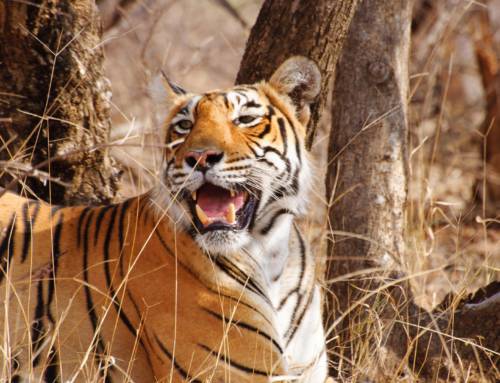Research Article: Goswami, V. R., Madhusudan, M. D., & Karanth, K. U. (2007). Application of photographic capture-recapture modelling to estimate demographic parameters for male Asian elephants. Animal Conservation, 10(3), 391–399. https://doi.org/10.1111/j.1469-1795.2007.00124.x
Blog author: Dhanush Shetty
Key Takeaways:
- This study presents an innovative approach to estimate demographic parameters for male Asian elephants using photographic capture-recapture methods.
- Due to hunting of male elephants for their tusks, the ratio of male to female elephants has gone up from 1:5-6 in 1960 to 1:10-20 in the 1990s.
- The researchers identified and tracked individual male elephants over time using photographs of their unique body characteristics.
- The study estimated the population size, survival, and recruitment rates of male elephants in the Nagarahole-Bandipur region of southern India, providing valuable insights into their demographic parameters.
- As per the study, the population size of male elephants in the 176 km2 region was approximately 134, with a recruitment parameter 12, which implies that roughly 12 new males would join the population.
- Data showed 134 males, 571 females in adult group, 40 males and 102 females in sub-adult group, 145 in young group totalling to a number of 991 elephants in the region during the year 2006.
Asian elephants have been facing threats due to conflict with humans and poaching for ivory, with their population skewed negatively over the years. Current methods used by park managers for enumerating elephant numbers are not scientifically valid as they do not provide much information about abundance of the male or the vitality rates (used to determine how well a group of animals are doing by considering birth, death and migration). The method followed by researchers did provide information about the elephant abundance but did not cover much information about the demographic rates (to segregate elephant population numbers based on gender).
Furthermore, it is important to acknowledge that counting elephants through direct observations is challenging. Despite being mega-herbivores, they prove difficult to detect in forest landscapes, particularly due to rugged terrains and their extensive roaming behaviour. Dr Goswami and a team of researchers have devised a method where camera trapped photography along with evaluation of the distinctive features of elephants like tail length, angle of the tusk etc., enables easy identification of individual male elephants.
The researchers have put forth a novel approach to estimate the population and demographic parameters of male Asian elephants using photographic capture-recapture methods. The camera traps take pictures of elephants with the use of a motion sensor at different times of the day when they pass near the camera traps. The researchers use a statistical formula given by scientists Lincoln and Petersen which estimates the total number of animals in a population by comparing the number of animals identified in the first camera trap photo with the total number of animals in the second photo, and then dividing it by the number of animals that were seen in both photos.
The study was carried out in the Nagarahole-Bandipur region of southern India, where an estimated population of almost 1,000 Asian elephants roamed. To track and identify individual male elephants over time, the researchers employed photographs of their unique tusk characteristics, tail length, tail brush arrangement etc., The capture-recapture model was then employed to gauge the population size, survival, and recruitment rates.
As per the study, the population size of male elephants in the 176 km2 region was approximately 134, with a recruitment parameter 12, which implies that roughly 12 new males would join the population. The researchers noted that their approach provided valuable insights into the demographic parameters of male elephant populations, which could be instrumental in conservation efforts.
The paper concludes that photographic capture-recapture methods could be an efficacious tool to monitor the populations of elusive species such as male Asian elephants. The non-invasive approach enables the estimation of population size and demographic parameters, which could be pivotal for conservation planning and management. The authors suggest further research to explore the application of these methods to other species and populations.
The study on male Asian elephants showcased the effectiveness of photographic capture-recapture techniques in offering precise abundance estimates for individually identifiable endangered species. Expanding the coverage to larger areas and intensifying sampling can lead to further improvement in the precision of estimates.
In essence, this paper unveils a pioneering approach to estimating the demographic parameters of male Asian elephants using photographic capture-recapture methods. The findings provide valuable insights into the demographics of the elephants which is a determining factor for understanding population dynamics. This approach could also aid in future conservation efforts.
You can access the article here.
Keywords: photographic capture-recapture, demographic parameters, male Asian elephants, animal conservation, modelling, population estimation.



